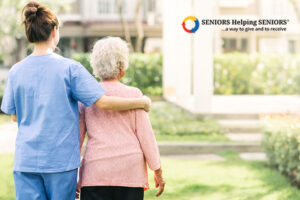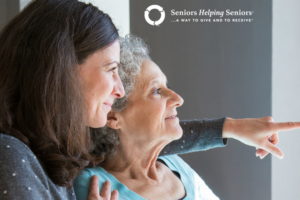4 Essential and Practical Tips for Fall Precautions for the Elderly

In the US, falls send older adults to the emergency room for treatment every 11 seconds.
At that rate, falling is the most common cause of injury among America’s seniors. But by taking fall precautions in the house, you can reduce the risk of hip fractures, cuts, and serious head injuries that result from bad falls.
Taking into consideration home safety for elderly people can prolong the amount of time an individual remains independent at home. These 4 fall precautions focus on simple environmental changes for better senior safety.
Keep reading to find out what they are and why they’re important.
Why Fall Precautions Are Important
More than 25% of older adult falls every year. Of those, less than 50% will get treated, because they refuse to tell their doctor about their fall.
What makes this fact even starker is that once an elderly person falls, their chance of falling again doubles – and the most common cause of traumatic brain injury is a fall.
But besides the potential for serious injury, having one fall can affect someone’s inclination to participate in certain activities. Due to the fear of a second fall, an individual may avoid physical and social activities that are important to their health. This might even lead to depression and social isolation.
Most men tend to fall while in the garden, and most women fall while they’re in the house. With the majority of falls happening in and around the home, the most important steps in fall precautions start in your home.
4 Practical Fall Precautions for the Home
Changing the environment of the home to account for the physical changes that occur as you age is essential to senior safety. With these 4 precautions, you’ll improve your home’s safety for the elderly by a long shot.
1. Wear Proper Attire
Wearing clothing that doesn’t properly fit can be dangerous. Whereas tight clothing can cause overheating or limited blood flow, loose clothing can get caught on windows, doors, or furniture. It’s also possible to trip and fall over clothing that fits loosely.
Equally as important to clothing are shoes. Avoid shoes that don’t fit the foot or have flat, slippery soles and very little grip.
In the case you have foot problems, make sure you have those addressed with orthopedics. Pain and discomfort while you walk put you at risk of falling.
2. Keep It Clean
Leaving clutter and junk lying around the floor can increase your risk of falling. Removing anything lying around, especially on stairs and in tight hallways, will reduce the chance of tripping or knocking into these items. You should also fix loose carpet and rugs or other broken home fixtures that could pose a hazard while you move around your home.
3. Light The Area
Ensure that all areas in and around the house are adequately lit and that lights are working as they should. Proper lighting in stairways, hallways, bedrooms, and bathrooms, is especially important for people with vision problems.
4. Install Extra Help
There’s an entire industry of senior safety devices that are easy to install around the home. These include handrails for going up and down stairs as well as grab bars for getting on and off the toilet and stepping in and out of the tub.
More Senior Safety
Taking the proper fall precautions around the home can reduce the chance that you or a loved one sustains a serious injury. All you have to do is keep your home tidy, wear the right clothing, install grab bars where necessary, and brighten up the areas you frequent the most.






